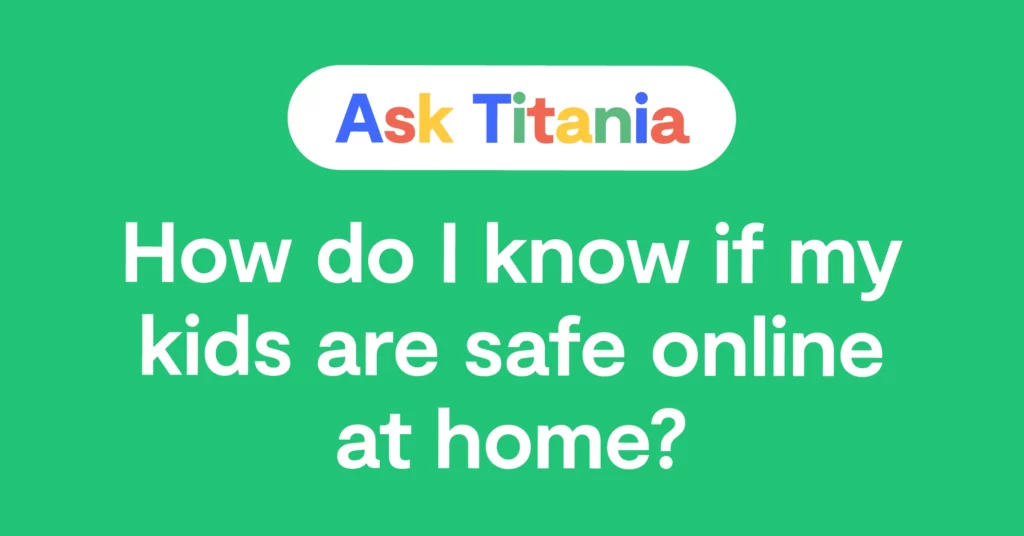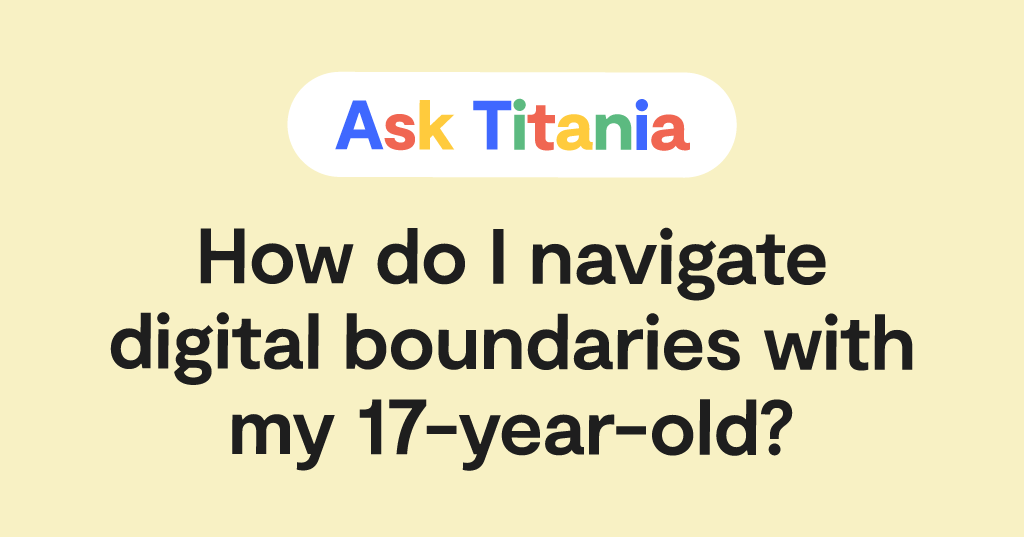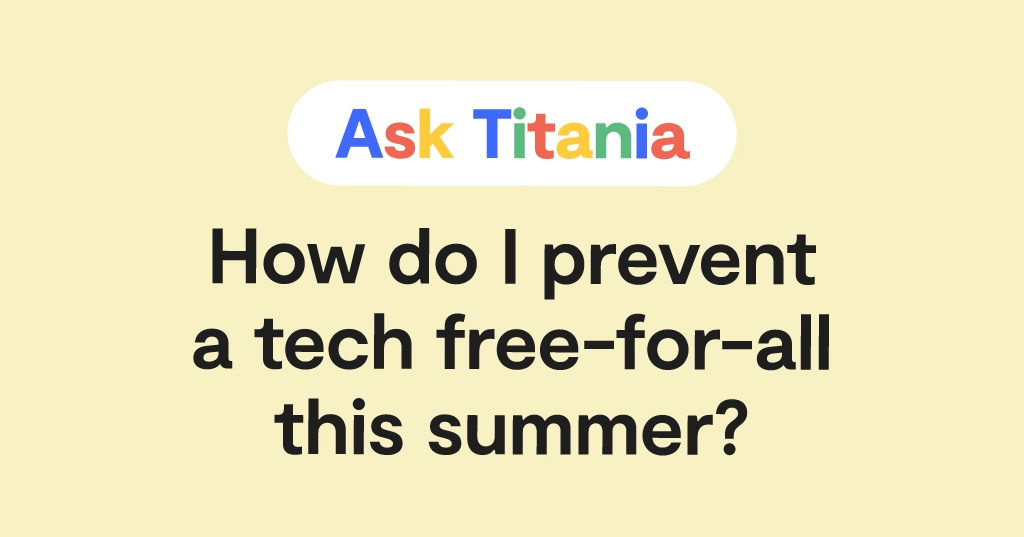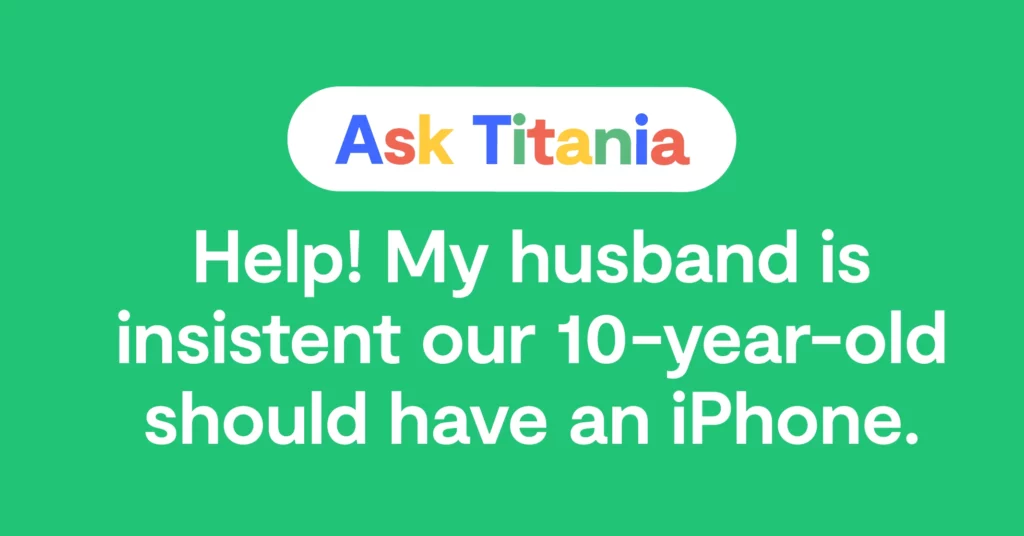Dear Titania,
I have three kids, and for our house we’ve got a Bark Phone that lives in the kitchen that acts as a home phone. My kids are fairly young, but I’d love to know what we can do to set up actual boundaries with the internet in our home. How do we know if we’re doing all the right things? Also, I’m anxious about what I don’t know. Any advice on where to start?
Signed,
Worrying About Whether We’re Really Protecting
Dear Worrying About Whether We’re Really Protecting,
I’m so glad you asked this question! Seriously, I hear it from lots of parents, and I have a feeling a lot more are wondering the same thing but aren't sure how to bring it up. I get it — it’s definitely overwhelming to take a step back from everything and try to figure out where to even start. I work in tech and I’m still constantly learning and discovering new things (including all of the ingenious workarounds that kids figure out!).
To help make this whole thing a little less intimidating, I’ve got a 5-question checklist that helps break everything down into easy-to-understand chunks that you can work at your own pace. As I tell people all the time, online safety isn’t a one-and-done thing. You’re going to be constantly learning, reacting, and adjusting to your child, society, and tech in general. The trick is to be open, honest, and flexible. Let’s dive in!
My Go-To 5-Part Checklist for Getting Started With Online Safety
1. Have you done a device inventory?
If you’re like our family, you probably have something digital in every room — smart TVs, PlayStations, laptops, iPads, and maybe even old iPhones in the junk drawer. Grab a piece of paper and make a list of everything in your house that connects to the internet. I’m serious. Younger kids may only want to play games right now, but as they grow up, they’ll want to get online to chat with friends, google stuff, and download social media apps.
One of the most important things right now to remember is that all of these connected devices are gateways to the internet. I’ll use an example. Netflix used to be something you connected to your TV, and that was the only way to access it.
Today, you can get to it via your smart TV, log in on your Phone, pull it up on the Xbox, and even watch it on a Chromebook. So if you want to block it everywhere, you have to actually block it everywhere — and that can be like playing whack-a-mole.
Doing a device inventory will help you identify all the moles, so you can (internet) whack them, if that’s what you want. Knowing is almost all of the battle when it comes to online safety.
2. Are you blocking aka filtering?
Now that we’ve got your inventory of devices, let’s move on to the next important step — limiting what content is able to be accessed by those devices, and when. Keep in mind that there are two ways the internet gets to your children’s devices: Wi-Fi and cell service.
Making sure that all the bad stuff is out of reach — things like porn, sexual content, violence, inappropriate gaming/gambling sites, and more, in addition to limiting when they can be accessed, is a critical next step. The best way to do this is with the Bark Home, which is a small device you plug into your Wi-Fi router that lets you easily block websites and apps, as well as create time-limits and screen time schedules.
With just a few button taps on your phone, you can create a kid-safe internet for your children. And the best part? It won’t apply to your devices, so you don’t have to worry about having Instagram grayed out.
Finally, one of my favorite parts of Bark is the internet pause button. It’s great for timeouts when your kids need a digital break.
3. What are your house rules?
Let’s take a minute to look at the rules you’ve laid out already.
The Bark-Phone-only-in-the-kitchen rule is a great start! But It’s likely you have other devices that have connective capabilities, like smart TVs, tablets, laptops, and gaming consoles. Every device needs rules, and for that I definitely recommend a tech contract. Sit down with your kids, break out some snacks, and talk about expectations and hard-and-fast rules when it comes to tech.
Kids need boundaries, and parents need peace of mind that there’s going to be at least a little accountability if house rules are broken. When you’re done, print it out and stick it on the fridge so everyone can refer to it if they're “confused.”
4. How well are you monitoring your children’s online activities?
Lots of folks use the word monitoring to mean “keep an eye on.” That’s all fine and dandy, but it’s not convenient, reliable, or easy to do if your version of monitoring means looking at your child’s browsing history after the fact. Bark, on the other hand, uses the word monitoring to mean “our advanced AI scans your child’s online activities to look for potential issues.” This means things like bullying, online predators, suicidal ideation, sexual content, and more are proactively surfaced to you with recommended next steps so that you know what is happening, where, and what to do about it.
Bark’s monitoring works on devices (from tablets and Chromebooks to iPhones and Androids) as well as apps, including kid-favorites like YouTube, Instagram, Discord, and others. You can find a full list of everything Bark will monitor here. Here’s just a few examples of things I find incredibly useful for Bark to keep an eye on:
- YouTube searches
- Comments on Instagram posts
- Roblox chats
- Google Drive attachments
Your Bark Phone does almost all of this kind of monitoring automatically, which is why it’s the best first phone for kids out there. Excellent choice, there!
Now, please note: There are just some things that can't quite be monitored yet. And for this very reason, we've given parents tools that can just block or set time limits so you have some semblance of control.
If this sounds familiar, it might be better to just not have that piece of technology in the house in the first place — because the inability to monitor it becomes more problematic than the benefit of your children being able to access it.
5. Do you talk about the hard stuff?
I’m a firm believer in closing the emotional gap between parents and kids. The more you talk (and even more important, LISTEN), the more you’ll know what’s actually going on in their world. Whether it’s pausing a movie to talk about a problematic scene or bringing up topics from the news (like sextortion), make sure you’re learning about your child’s point of view regularly.
All of the filtering, monitoring and device protection in the world won’t help if your child a) doesn’t really understand your family’s values, b) is afraid to come to you for help, and c) isn’t equipped to make smart decisions when you're not around. Kids of course will still make mistakes — that’s actually a required part of growing up — but frequent conversations (the kind that can make you squirm, they're so awkward) are beneficial to your family in the long run. Keep having them. The relationship that you build with your child through candid conversations like these over time will be the best way to keep them safer, not only online but in real life.
More Bark Resources to Help You Out
As your kids grow up, you’ll need to keep learning about the latest things they’re into. That’s why Bark publishes helpful blog posts, recent app reviews, tech guides, and even book, movie, and podcast recommendations so you can learn what’s appropriate for their age and what’s not.
I also recommend sitting down with your older kids (there are some mature themes) and watching Childhood 2.0. This one is super simple and it’s absolutely free. Put down your phone, don’t multitask, and really take in everything that’s presented. This film was made to give a real-life glimpse into the issues facing kids and families in the digital age, and it features actual teens and parents, along with psychologists, doctors, industry experts, and more.
Finally, join Parenting in a Tech World, our Facebook group for raising kids today. You’ll find half a million other parents sharing advice, asking questions, and providing super valuable insight into questions I guarantee you’ve thought about at least once.
Good luck with your journey — you’ve got this!
Read more
Bark helps families manage and protect their children’s digital lives.






